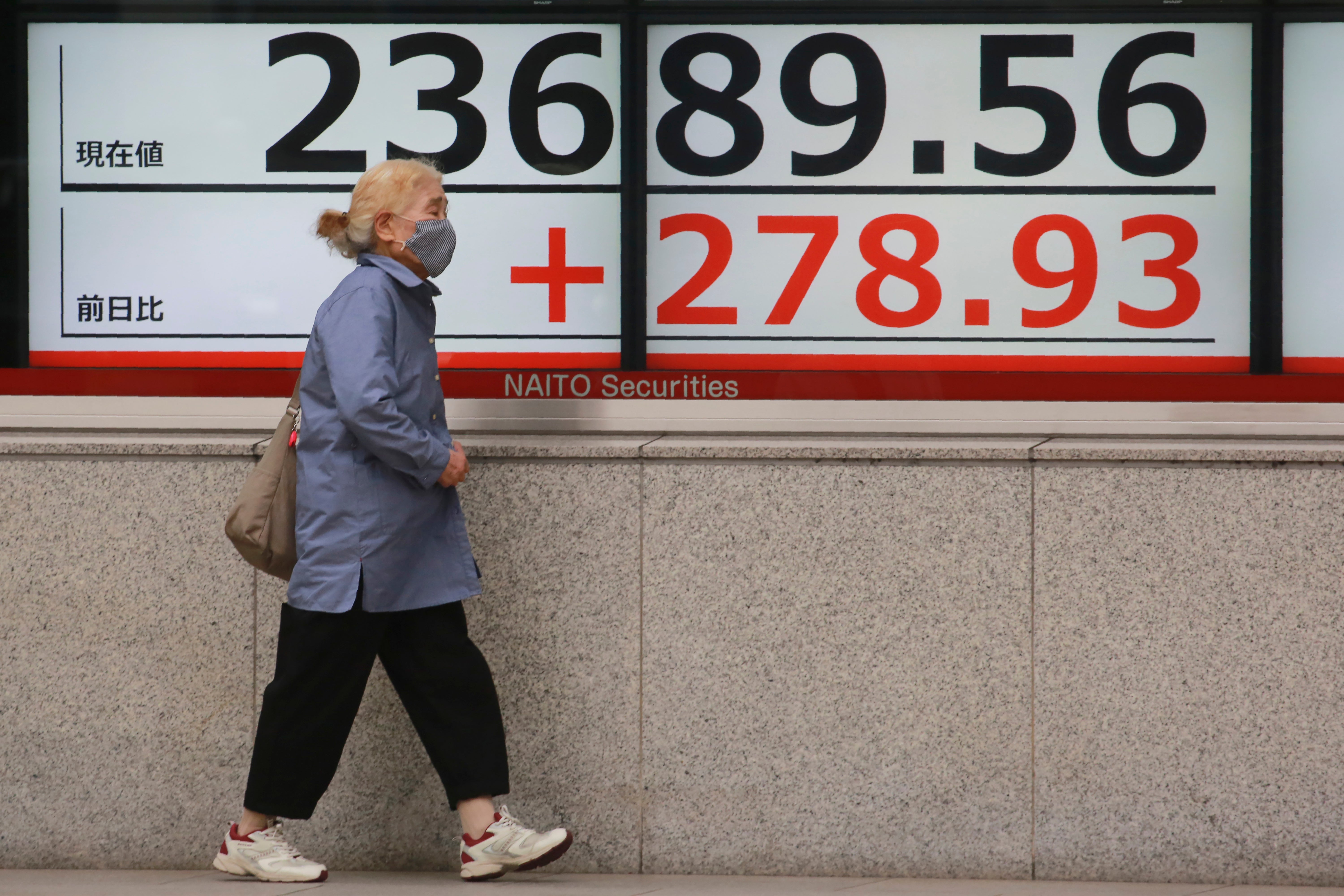Asian shares lifted by stronger China growth numbers
Shares have advanced in Asia after China reported its economy grew at a 4.9% annual pace in the last quarter

Your support helps us to tell the story
From reproductive rights to climate change to Big Tech, The Independent is on the ground when the story is developing. Whether it's investigating the financials of Elon Musk's pro-Trump PAC or producing our latest documentary, 'The A Word', which shines a light on the American women fighting for reproductive rights, we know how important it is to parse out the facts from the messaging.
At such a critical moment in US history, we need reporters on the ground. Your donation allows us to keep sending journalists to speak to both sides of the story.
The Independent is trusted by Americans across the entire political spectrum. And unlike many other quality news outlets, we choose not to lock Americans out of our reporting and analysis with paywalls. We believe quality journalism should be available to everyone, paid for by those who can afford it.
Your support makes all the difference.Shares advanced in Asia on Monday after China reported its economy grew at a 4.9% annual pace in the last quarter, with consumer spending and industrial production rising to pre-pandemic levels.
Japan’s Nikkei 225 led the gains, adding more than 1% by midday.
China was the first country to suffer coronavirus outbreaks and the first to emerge from the pandemic and begin reopening its economy After contracting 6.8% in the first quarter of this year the economy grew 3.2% in the April-June quarter.
The 2.7% quarterly expansion was weaker than expected. Still, the recovery of Asia's largest economy is good news for other countries that rely heavily on trade with China, including Japan. It reported Monday that its exports fell at a slower pace in September from a year earlier, partly thanks to higher demand from China.
The Nikkei 225 index added 1.1% to 23,672.60 while Hong Kong's Hang Seng climbed 0.8% to 24,591.92. In South Korea, the Kospi jumped 0.9% to 2,362.49 while the S&P/ASX 200 in Australia surged 1% to 6,237.60.
The Shanghai Composite index logged a more modest gain, picking up 0.3% to 3,346.61 as the relatively strong economic data doused the chances for major stimulus measures that might help boost markets.
The National Bureau of Statistics reported that industrial production rose 5.8% in July-September over the same quarter last year, a marked improvement over the first half’s 1.3% contraction.
Retail sales rose 0.9% over a year earlier, up from a 7.2% contraction in the first half as consumers, already anxious about a slowing economy and a tariff war with Washington, tightened their belts.
Meanwhile, hopes for new stimulus for the U.S. economy were muted, with House Speaker Nancy Pelosi saying time is running out to get measures passed before the Nov. 3 election.
Wall Street closed out a choppy week of trading with more of the same Friday, as a late-afternoon stumble led U.S. stock indexes to a mixed finish.
The S&P 500 rose 0.47 points to 3,483.81. The Dow gained 112.11 points, or 0.4%, to 28,606.31. At one point, it had been up by 348 points. The Nasdaq fell 42.32 points, or 0.4%, to 11,671.56. The Russell 2000 index of small-cap stocks dropped 5.08 points, or 0.3%, to 1,633.81.
The S&P 500 ended the day just a fraction of a point higher at 3,483.81. The Dow Jones Industrial Average gained 0.4%, to 28,606.31. The Nasdaq fell 0.4% to 11,671.56, while the Russell 2000 index of small-cap stocks dropped 0.3% to 1,633.81.
Big Tech and energy companies fell while health care and industrial stocks rose.
The mixed performance matched the mixed data: the U.S. government reported that retail sales rose in September for the fifth straight month, while the Federal Reserve said U.S. industrial production had its weakest showing since the spring.
Stock indexes have recouped most of their losses from a swoon as talks between Democrats and Republicans on an economic stimulus package failed to deliver results. Investors have been hoping that Washington would provide more financial support for the economy since July, when a $600-a-week extra benefit for the unemployed expired.
On Thursday, the government’s said the number of Americans seeking unemployment aid increased last week to 898,000, a historically high level reflecting the weakness due to the pandemic and ensuing recession.
Rising coronavirus caseloads across the globe have left investors cautious as governments impose restrictions to contain outbreaks.
The 10-year Treasury yield rose to 0.76% from 0.74%.
U.S. benchmark crude oil lost 17 cents to $40.95 per barrel in electronic trading on the New York Mercantile Exchange. It gave up 12 cents on Friday to $41.12 per barrel. Brent crude, the international standard, lost 16 cents to $42.77.
In currency dealings, the dollar rose to 105.43 Japanese yen from 105.40 on Friday. The euro slipped to $1.1706 from $1.1717.
___
AP Business Writer Joe McDonald contributed.